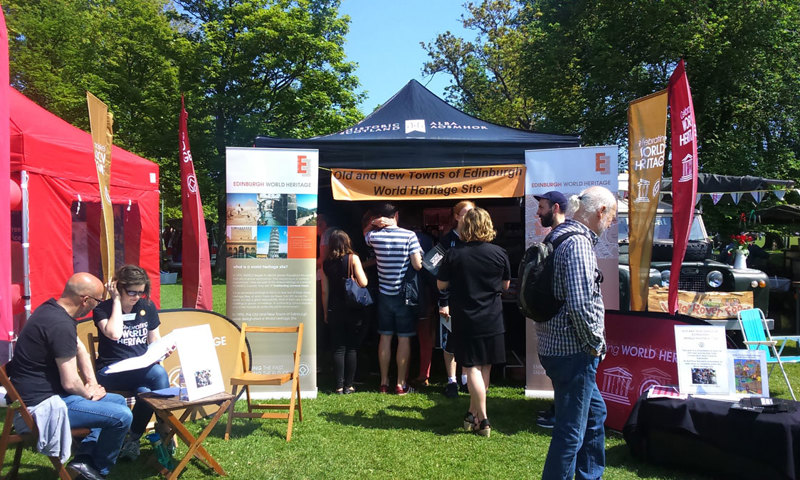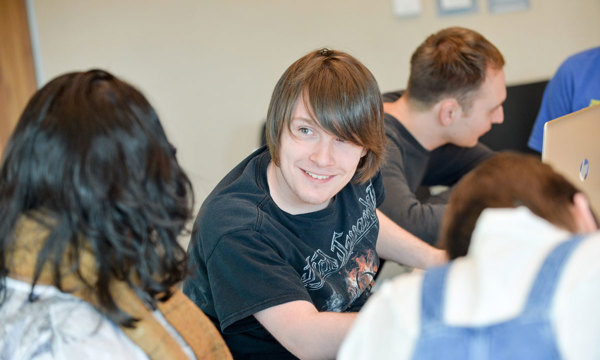1 Overview
When changes happen in your community, you might find yourself involved in the planning process. That might mean getting permission for a community project, or supporting someone else's plans. It could also mean getting involved in planning for your community - thinking about what changes could make it better, healthier and happier.
The planning system
Decisions about how land is used and how places change matter to us all. The planning system decides how we use land in the public interest.
At HES, we have a formal role in the planning system. We give advice to decision-makers on planning applications, listed building consents, and conservation area consents. We also make the decisions for works that affect scheduled monuments. Watch this short video to find out more about our work in the planning system.
Community planning
The community planning process in Scotland is separate from the planning system. Community planning is about how public bodies work together, and with local communities, to design and deliver better services that make a real difference to people's lives.
We support the Place Principle in Scotland to create successful and sustainable places.
We support Community Planning Partnerships and can provide services for plans to improve local areas.
Getting involved
The best person to explain what Scotland’s heritage means to you is you. That’s why we want communities to be involved in any plan for their local area. Because different types of plan can affect the places you care about in different ways.
Community Planning Partnerships prepare plans for the delivery of local services. These include Local Outcome Improvement Plans and Locality Plans.
Other plans are for the development and growth of your places. These are part of spatial planning system. They include Local Development Plans and Local Place Plans.
Need some support?
If you’re new to the planning system, it can be hard to know where to start. Organisations like PAS can give you advice on applications for planning permission and making your voice heard in planning decisions.
If you want to get involved and aren’t sure where to start, we have prepared a pack with extra information to help.
You can find out more about getting your voice heard in the planning system in the following pages.
2 The planning system
The planning system is how we make decisions about changes to our places. Decisions like where homes are built, how we move around, and even the technologies that we depend on. Changes can also be to existing buildings, both how they look, and how they are used.
When a change is proposed in your area, it will normally be your local Council that decides whether it should go ahead. They will have to consider what impacts a new development might have and make sure that decisions are in the public’s long-term interest.
There are lots of ways to get your voice heard in the planning system. The best way is normally to get involved as early as possible in the process.
Planning for the future
Local planning decisions are based on the development plan for the area. When your Council is writing theirs you can get involved. There will be information on each Council’s website telling you what stage they are at in making their plan, and how to contribute. The easiest way to find this is to do an internet search for your Council’s name and the phrase ‘local development plan’.
If you’re part of a community group, you can also help to form the Local Development Plan for your area by making a Local Place Plan. You can read lots more about this type of plan on the next page. If you’re not part of a community group but are interested in finding how you could be, you can read more on our Community groups web page.
Planning applications
Sometimes the first time people hear about a proposed change is when someone submits a planning application. If you want to share your opinion on a current application with your Council, you can submit a comment online. Try searching for the name of your council and the phrase ‘planning portal’.
If you’re involved in a project that includes new buildings or changes to an existing building, you might need planning permission. You should check this with your local Council at an early stage.
Changes to historic places
If you’re involved in a project that includes historic buildings or sites, you might need other permissions as well. If you’re making changes to a listed building or in a conservation area, you should speak to your Council. You might need listed building consent, or conservation area consent.
Any changes to a scheduled monument need scheduled monument consent. Scheduled monument consent is handled by us at Historic Environment Scotland. You can read all about it on the Applying for consents part of our website. It is against the law to make any changes to a scheduled monument without prior consent.
If your project involves changes to a historic building or place, you may need advice from us. You can read all about our role in the planning system and the advice we give on the Planning and guidance part of our website.
3 Local Place Plans
Local Place Plans are new type of plan. They can help communities influence and shape development in their areas. Local Place Plans are a way to share your ideas about the changes you want to see in your area.
They’re also a great way to explain what makes your place special.
What’s important to you?
Communities can use Local Place Plans to draw attention to the land and buildings they care about. People value places for lots of different reasons. It’s important to think about what it is that makes the place or site you want to include special.
You might want to think about places that:
- attract visitors, both locally and from elsewhere
- commemorate important events or people
- contribute to local open spaces and play areas
- are important to local heritage
- are special to you or your community in any other way
All of these places help to shape a community’s identity. You should show any places you identify on a map in your Local Place Plan.
Thinking about change
Local Place Plans can also include ideas for the future of your most valued places. It’s a great chance to point out opportunities for recognising buildings and places, recording them, and sharing information about them.
Keeping these special places alive or bringing them back into use has wider social, economic and environmental benefits. Local communities often have the knowledge and passion to ensure this is a priority. Local Place Plans can make sure enhancing and securing the long-term future of these places is built in right at the start of the process.
If you need advice about projects for the re-use of or changes to your most valued places, we can help. Contact us at: hmenquiries@hes.scot
Find out more
The Our Place website offers more information on Local Place Plans. It also explains more about place-based working and how this can improve our quality of life. PAS also may be able to help you as you draw together your Local Place Plan.
If you want to find out more about how to explore, share and celebrate your heritage in the planning process, or anywhere else, start with our Talking About Heritage guides. They can help to get your voice heard.
4 Case study: Documenting Scotland's Urban Past with Glasgow Disability Alliance
GDA is a membership organisation that supports disabled people to participate and make valuable contributions to our families, communities, and society. They have over 4,500 members in the greater Glasgow area.
Members of their young people's network joined forces with our Scotland's Urban Past team to document their experiences of their urban environment.
In a series of workshops held in some of Glasgow's most inspiring buildings, the group developed skills in interpreting urban architecture and historical maps. They mapped places and journeys, and got hands-on with camera and filming equipment.
During the workshops, group members produced video interviews, personalised maps and art works celebrating their favourite places.
This project is a brilliant case of people sharing what is important to them in the area they live, having fun, and developing new skills.
You can find out more about the project on the Scotland's Urban Past website.
Visit Scotland's Urban Past5 Case study: Edinburgh World Heritage Site Management Plan
During summer 2016, we went out to ask people for their thoughts on how Edinburgh's World Heritage Site is managed. We used the Place Standard Tool, which is a great way to start a conversation with people about the places they spend time.
We found out the concerns and ambitions of over 1,000 people. These fell under six key themes. These themes now form the basis for the new Management Plan, which was launched in 2018.
The five-year plan includes commitments to improve the quality of new development, manage tourism growth better, and deepen residents' awareness and understanding of the site. One of the 39 actions is creating 'Place Briefs' for redevelopment sites. These set out the city's expectations in terms of quality and 'fitting in' with the historical context, and improving local community engagement.
Using the Place Standard Tool in this way helped to connect the dots between community aspirations and tangible changes in how decisions are made on development proposals in Edinburgh.

During summer 2016, we asked people for their thoughts on how Edinburgh's World Heritage Site is managed.

